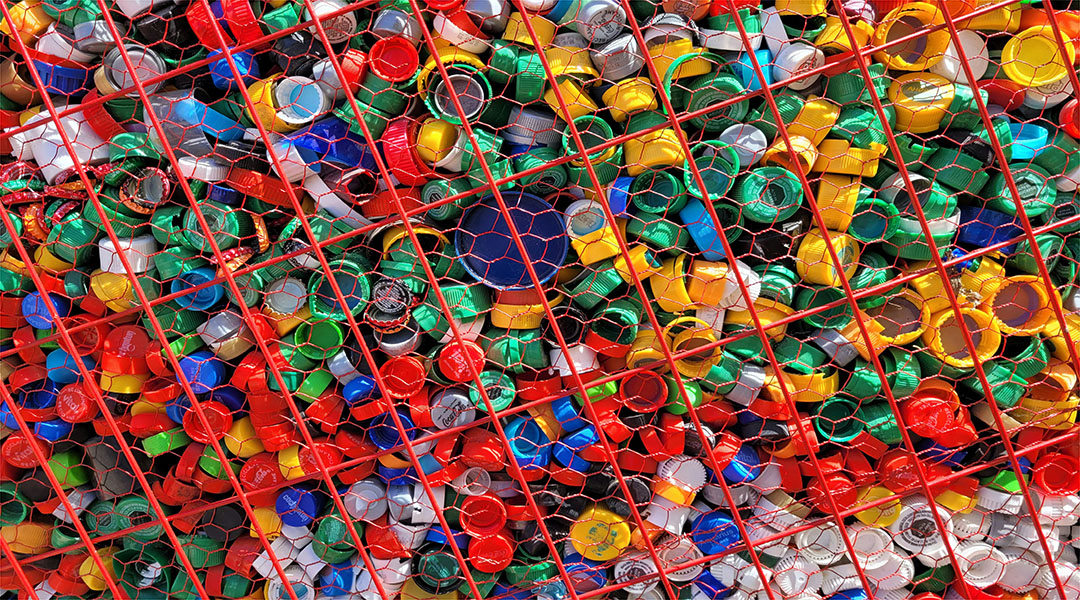The link between Comamonas bacteria and plastic waste it uses for food has been somewhat mysterious until now, but researchers at Northwestern University have discovered just how they break down plastic for nourishment. The process involves first converting the plastic into tiny pieces called nanoplastics, then secreting an enzyme that dissolves these nanoplastics further. The result is a carbon atom ring that Comamonas can use as food.
The team’s results offer the possibility of creating plastic waste removal solutions based on feeding the bacteria, especially targeting polyethylene terephthalate (PET), a plastic commonly used in food packaging and beverage bottles.
“We have systematically shown, for the first time, that a wastewater bacterium can take a starting plastic material, deteriorate it, fragment it, break it down, and use it as a source of carbon,” said Ludmilla Aristilde, team leader and Northwestern associate professor of environmental engineering, said in a statement.
“It is amazing that this bacterium can perform that entire process, and we identified a key enzyme responsible for breaking down the plastic materials,” she continued. “This could be optimized and exploited to help get rid of plastics in the environment.”
Small plastics, big problems
Plastic pollution is a major environmental concern because the hardiness and ability to resist deterioration that makes plastic so useful also means that it lingers in nature for a long, long time — some types of plastics can take up to 400 years to break down, and when they do, this brings new problems.
Microplastics, around 0.5 millimeters in size, are created from larger plastic waste and have been found across Earth, spread by water systems. This includes some of our planet’s most remote regions, such as the deepest part of the ocean, the 11-kilometer deep Mariana Trench, and the highest peak, Mount Everest, which is 9 kilometers above sea level.
When microplastics break down further, the result is nanoplastics, which are between 1 and 1,000 nanometers in size, smaller than the width of a human hair. And if the reach of microplastics is scary, the extent to which nanoplastics have spread is perfect Halloween reading, as nanoplastics have been found in human arteries, lungs, semen, placentas, and even our brains.
PETs are a major contributor to plastic pollution not only because of their widespread use — accounting for 12% of total global plastics used — but also because they do not break down easily. As a result, PETs account for an estimated 50% of the nanoplastics found in wastewater systems.
Putting bacteria to work
Aristilde and colleagues’ work began with an investigation into the mechanisms used by Comamonas testosteri bacteria to metabolize simple carbons created from broken-down plants and plastics.
\Comamonas testosteri is important to this new research and potentially for clearing plastics because it is a type of Comamonas bacteria that grows on PETs.
The team wanted to know how the bacteria interacts with plastics and eventually feeds on them. To do this, they gathered bacteria from wastewater and then grew it on films and pellets made from PET. They also searched the wastewater environments from which they collected their bacteria for traces of plastics broken down into nanoplastic pieces.
“In the presence of the bacterium, the microplastics were broken down into tiny nanoparticles of plastics,” Aristilde said. “We found that the wastewater bacterium has an innate ability to degrade plastic all the way down to monomers, small building blocks that join together to form polymers. These small units are a bioavailable source of carbon that bacteria can use for growth.”
The scientists then delved into the bacteria to identify the mechanisms it is using to degrade PET. They found one particular enzyme the bacteria secretes when it finds PET plastics.
The next step for the team was to confirm if this enzyme is indeed how Comamonas testosteri breaks down plastics. To do this, they produced a strain of the same bacteria that doesn’t have this enzyme and found this strain had either been stripped of its ability to break down plastics or this power was severely inhibited.
Before this discovery can be used to develop methods of degrading and removing plastics, the team thinks the findings could provide scientists with a better understanding of how plastics evolve in wastewater and may change our understanding of how nanoplastics reach wastewater.
“Wastewater is a huge reservoir of microplastics and nanoplastics. Most people think nanoplastics enter wastewater treatment plants as nanoplastics,” Aristilde concluded. “But we’re showing that nanoplastics can be formed during wastewater treatment through microbial activity.
“That’s something we need to pay attention to as our society tries to understand the behavior of plastics throughout its journey from wastewater to receiving rivers and lakes.”
Reference: Ludmilla Aristilde, et al., Mechanisms of Polyethylene Terephthalate Pellet Fragmentation into Nanoplastics and Assimilable Carbons by Wastewater Comamonas, Environmental Science & Technology, (2024), DOI: 10.3847/1538–4357/ad70b7
Feature image credit: Killari Hotaru on Unsplash














